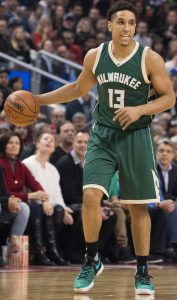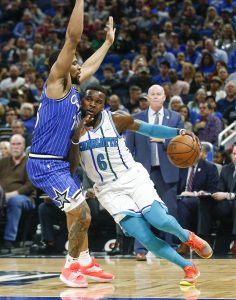With just over two weeks left in the 2018/19 regular season, we’re getting a clearer picture of what this year’s draft order might look like. We’re also getting a pretty clear sense of which of the traded 2019 picks with protections will or won’t change hands this spring.
Using our 2018/19 Reverse Standings as a reference point, here’s our latest check-in on where things stand for those traded 2019 first-rounders, based on their protections.
Locks to change hands:
- Kings‘ pick to Celtics (unprotected)
- Current projection: No. 14
- Note: Pick will instead be sent to Sixers if it jumps to No. 1 (current odds: 0.5%)
- Clippers‘ pick to Celtics (top-14 protected)
- Current projection: No. 22
- Rockets‘ pick to Cavaliers (top-14 protected)
- Current projection: No. 25
- Nuggets‘ pick to Nets (top-12 protected)
- Current projection: No. 27
- Raptors‘ pick to Spurs (top-20 protected)
- Current projection: No. 29
The Raptors‘ and Nuggets‘ have been sure bets to change hands all season long. The Rockets‘ and Clippers‘ picks have now joined them in that group due to impressive surges by both teams — Houston has won 14 of its last 16 games and clinched a playoff spot last night, while the Clippers have lost just one of their last 11 contests. Both of those picks appear likely to end up in the 20s.
The Kings, meanwhile, will definitely lose their first-round selection, but its eventual destination is the only unresolved question for this group of picks. The Sixers will receive it if it’s No. 1 overall; otherwise it will head to the Celtics. As long as Sacramento remains at No. 14 in the lottery order, the odds of the pick jumping all the way up to No. 1 would be just 0.5%, so it’s probably safe to assume it’ll end up in Boston.
Locks to be protected:
- Cavaliers‘ pick to Hawks (top-10 protected)
- Current projection: No. 3
- Bucks‘ pick to Suns (top-3 and 17-30 protected)
- Current projection: No. 30
The Cavaliers are unlikely to fall further than No. 4 in the lottery order, which means the furthest that their pick could slip would be to No. 8. They’ll keep their pick, and will owe the Hawks a top-10 protected pick in 2020.
As for the Bucks, they’ll almost certainly convey the first-rounder they owe to the Suns next season, when it’s just top-7 protected.
Still up in the air:
- Grizzlies‘ pick to Celtics (top-8 protected)
- Current projection: No. 6/7 (tie)
- Current projection: No. 6/7 (tie)
- Mavericks‘ pick to Hawks (top-5 protected)
- Current projection: No. 6/7 (tie)
Currently, the Grizzlies and Mavericks are deadlocked at 29-44, so the final nine games for the two teams could go a long way toward determining whether or not they’ll keep their first-rounders. The Celtics and Hawks could each end up receiving top-10 picks, depending on how things play out.
The Grizzlies would actually prefer to convey that pick this year so that they can move forward with their rebuild without worrying about a future commitment. If they can win some games down the stretch, their odds of giving up that first-rounder should increase drastically — Washington (30-44) and New Orleans (31-44) are both bunched up with Memphis and Dallas in the 6-9 range of the lottery standings.
The difference between finishing sixth and ninth in the lottery order is significant. The No. 6 team will have a 37.2% chance at a top-five pick and a 96.2% chance of remaining in the top eight. The No. 9 team will have just a 20.2% chance of moving up.
This race is one worth keeping a close eye during the final two weeks of the season, though each pick’s owner won’t be officially finalized until lottery night.
Information from RealGM was used in the creation of this post.
 After nearly three years away from the NBA,
After nearly three years away from the NBA,  Shelvin Mack
Shelvin Mack